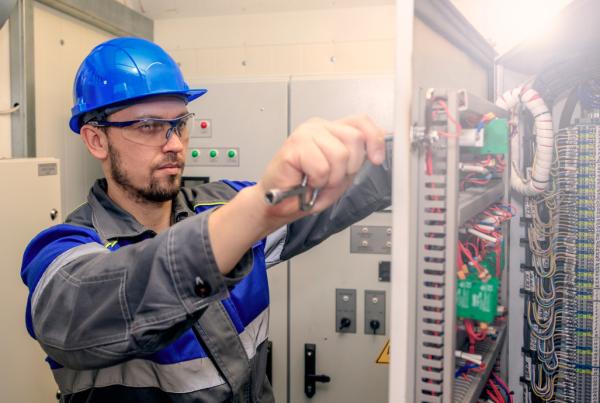OCPD vs. OL Protection for Motors: Understanding the Differences and the Importance of Correct Selection
In the intricate world of electrical service and maintenance, particularly in motor control and protection, understanding the distinctions between Overcurrent Protection Devices (OCPD) and Overload (OL) protection is critical. This article explores the differences between these two types of protections, their applications, and the importance of choosing the correct protection mechanism for motors.
Understanding Overcurrent Protection Devices (OCPD)
Overcurrent Protection Devices are crucial in safeguarding electrical circuits from the damaging effects of overcurrents, which can be caused by short circuits, ground faults, or overload conditions. OCPDs are designed to react to excessively high current flows that are potentially damaging to the electrical wiring and equipment.
Types of OCPDs:
- Fuses: These devices interrupt the flow of electricity when an overcurrent occurs by melting an internal element.
- Circuit Breakers: These automatically switch off the circuit when they detect an overcurrent. They can be reset and reused unlike fuses.
Understanding Overload (OL) Protection
Overload protection, on the other hand, is specifically designed to protect motors from the harm caused by prolonged periods of excessive current draw, which are not high enough to trip an OCPD. This condition typically arises in situations like mechanical overloads, binding, or other operational anomalies that cause the motor to draw more current than it is designed for over an extended period.
Types of OL Protections:
- Thermal Overload Relays: These devices use a bimetallic strip that heats up and bends to open the circuit when excessive current is drawn for a prolonged period.
- Electronic Overload Relays: These use electronic sensors and microprocessors to monitor current flow and disconnect power when an overload is detected.
Key Differences Between OCPD and OL Protection
- Purpose and Function: OCPDs protect against short circuits and ground faults, whereas OL protection guards against the damages caused by prolonged overcurrents that are below the trip threshold of the OCPD.
- Response Time: OCPDs respond very quickly to overcurrents to prevent immediate damage, while OL protections allow for a longer response time, considering the nature of overloads.
- Reset Mechanism: Fuses, a type of OCPD, require replacement after tripping, while most OL devices and circuit breakers can be reset.
Importance of Correct Selection
- Motor Safety: Incorrect protection can lead to motor damage. For instance, without proper OL protection, a motor can overheat and fail due to prolonged overcurrents that do not necessarily trigger an OCPD.
- System Reliability: The correct protection ensures that the motor and associated systems operate reliably without frequent shutdowns or failures.
- Regulatory Compliance: Adhering to electrical codes and standards, which often specify protection requirements, is essential for legal and safety reasons.
- Cost-Effectiveness: The right protection prevents costly motor repairs or replacements and reduces downtime in industrial settings.
Applications and Selection Criteria
When to Use OCPD:
- In scenarios where short circuits or ground faults are a significant risk.
- For overall circuit protection, including wiring and connected devices.
When to Use OL Protection:
- In applications where motors are likely to experience operational overloads.
- In cases where motors drive variable loads or are subject to fluctuating operational conditions.
Real-World Scenarios and Considerations
- Industrial Motors: In heavy-duty applications like conveyor systems or pumps, motors often face varying loads. OL protection is vital to prevent motor burnout.
- Residential and Commercial Applications: In HVAC systems or domestic appliances, where motors are less likely to face harsh operating conditions, a combination of both OCPD and OL protection might be ideal.
- Customization for Specific Applications: The choice of OCPD or OL protection might need to be tailored to the specific characteristics of the motor and its application, considering factors like motor size, type, and the nature of the load.
Best Practices in Protection Selection
- Conduct a Detailed Assessment: Understand the operational environment of the motor, including potential hazards and load characteristics.
- Consult Standards and Codes: Refer to national and international standards like the National Electrical Code (NEC) for guidance on protection requirements.
- Engage with Professionals: Work with electrical engineers or technicians who specialize in motor protection to ensure the best choice for your specific application.
- Plan for Future Changes: Consider future modifications or expansions in your system that might alter the protection needs.
Conclusion
In conclusion, both OCPD and OL protections play critical roles in safeguarding motors from different types of electrical hazards. Understanding the distinctions between these protections and making an informed choice based on the specific requirements of the motor and its application is crucial for ensuring motor longevity, operational reliability, and safety. As technology evolves,




